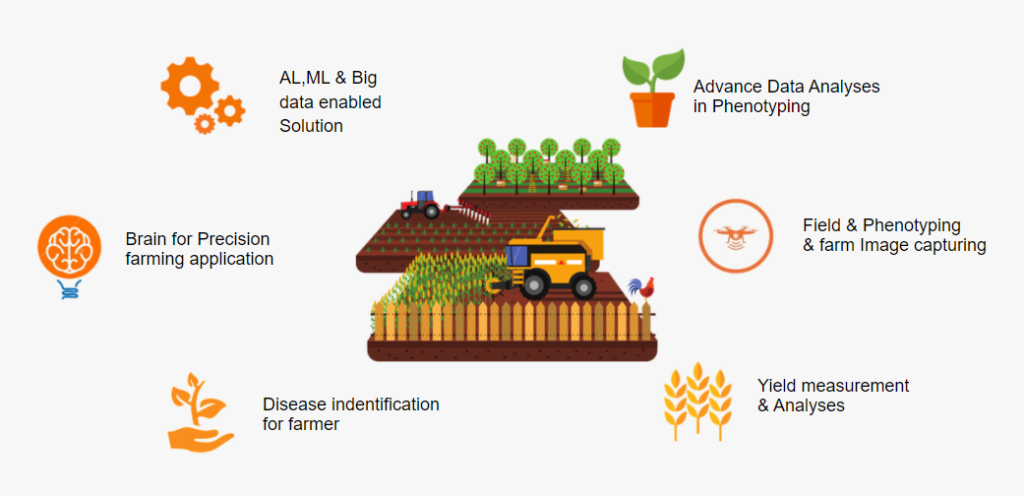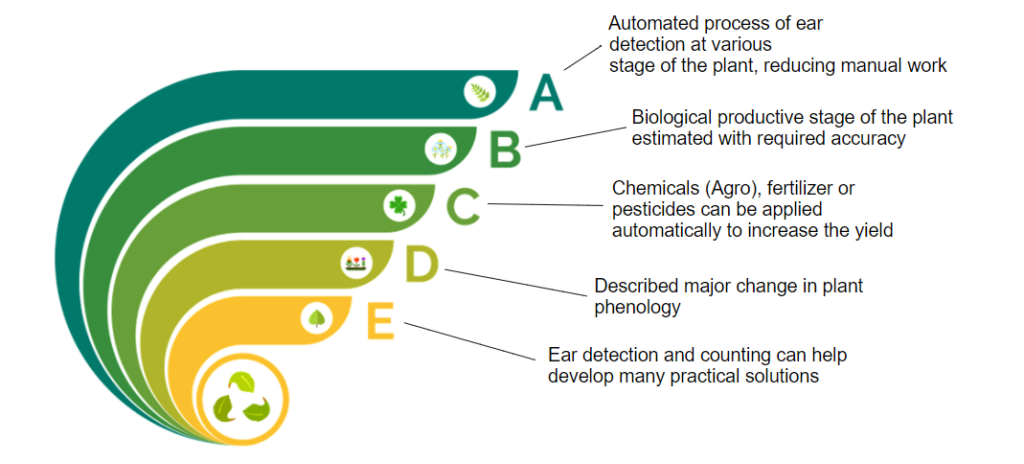Agriculture is an essential industry that provides food and resources for human consumption. However, with a growing global population and a changing climate, farming is becoming more challenging. To meet these challenges, technology is being introduced to the farming industry. AgriX is a company that provides state-of-the-art technology solutions to rural producers, delivering key agricultural benefits.
AgriX’s solutions are based on AI, machine learning, and big data analysis. They offer smart processes for precision farming, rapid disease identification, advanced phenotyping data analysis, field and farm image capture, yield measurement and analysis, and more. With these solutions, farmers can maintain, optimize, and innovate their crops.
One of AgriX’s key features is the automated ear detection system. The system accurately detects ear development stages and provides estimates of plant productive stage. This technology allows farmers to apply fertilizer and pesticides more accurately, leading to better crop yield and quality. Additionally, the system identifies major changes in plant phenology and provides recommended solutions based on ear detection and counting.
AgriX has partnered with several other technology companies, including Xpertnest, Gamaya, SatSure, Cropin, and Tartansense, to deliver the best high-tech data solution to wheat and rice growers worldwide. Each partner company focuses on specific crop types and uses different technologies to provide solutions. For example, Xpertnest focuses on phenotyping facilities, government industries, and Indian farmers, while Cropin works with farmers and corporations.
AgriX’s hyperspectral technology and precision farming tools are available to wheat and rice farmers. The hyperspectral technology provides detailed information about crop health and nutrient levels, while precision farming tools offer precise irrigation and fertilization management. These technologies help farmers save on costs, improve crop yield, and promote sustainable agriculture practices.
Another significant benefit of AgriX’s technology is crop planning. The company’s big data analysis solutions can help farmers plan their crops more efficiently, predicting the best planting and harvesting times, and identifying the optimal amount of water and fertilizer needed for each crop.
However, implementing AgriX technology can come with challenges. While the company’s solutions are designed to be easy to use, some farmers may require specialized knowledge and skills to implement these technologies effectively. Additionally, the cost of AgriX technology may be a barrier for small farmers who may struggle to afford the cost of sensors, drones, and other equipment.
AgriX is revolutionizing agriculture by providing innovative technology solutions that help farmers maintain, optimize, and innovate their crops. With advanced technologies like hyperspectral imaging, automated ear detection, and big data analysis, farmers can improve their crop yield, reduce costs, and promote sustainable agriculture practices. While there may be challenges to implementing AgriX technology, the benefits of using these technologies are significant, making it an investment worth considering for farmers world.
Agriculture is an important sector that provides food and resources for human consumption. The term “agrix” is a combination of agriculture and technology, which refers to the use of technology in agriculture to improve productivity and efficiency. In recent years, the agrix industry has grown significantly, and it is expected to continue to grow in the future. In this blog post, we will discuss the benefits and challenges of agrix.
Benefits of Agrix:

Increased Productivity: Agrix technology can help farmers to monitor and manage their crops more efficiently. By using sensors and drones, farmers can collect data on soil moisture, temperature, and other variables. This data can be used to make better decisions about when to plant, water, and fertilize crops, leading to increased productivity and yield.
Cost Savings: Agrix technology can also help farmers to reduce costs. By using precision farming techniques, farmers can reduce the amount of fertilizer, water, and other inputs they use. This can lead to significant cost savings and improve profitability.
Sustainability: Agrix technology can also help to make agriculture more sustainable. By using precision farming techniques, farmers can reduce the environmental impact of their operations. For example, by using GPS-guided tractors, farmers can reduce soil compaction, which can improve soil health and reduce erosion.
Better Quality Products: Agrix technology can also help farmers to produce better quality products. By monitoring crops more closely, farmers can identify issues early on and take corrective action. This can lead to better quality products that meet consumer demands.
Challenges of Agrix:

Cost: The cost of implementing agrix technology can be a significant barrier for many farmers. The cost of sensors, drones, and other equipment can be high, making it difficult for small farmers to adopt these technologies.
Complexity: Agrix technology can be complex and require specialized knowledge and skills. Farmers may need to hire consultants or specialists to help them implement these technologies, which can be an additional cost.
Data Management: Agrix technology generates a large amount of data, which can be overwhelming for farmers. Farmers may need to invest in data management systems to store, process, and analyze this data effectively.
Infrastructure: Agrix technology requires a robust and reliable infrastructure, including access to high-speed internet and other communication technologies. This infrastructure may not be available in some rural areas, making it difficult for farmers in these areas to adopt these technologies.

